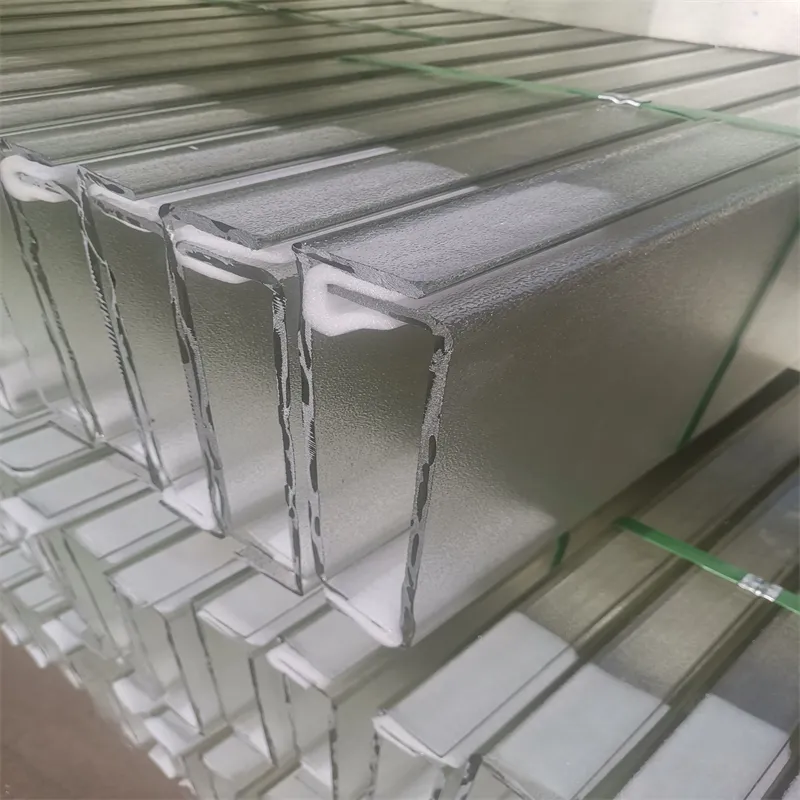Dec . 14, 2024 23:08 Back to list
Innovative Glass Solutions for Enhanced Transparency and Reflected Aesthetics in Modern Design
The Role of Transparent Reflective Glass in Modern Architecture
In recent years, the integration of transparent reflective glass in architectural design has gained significant momentum. This innovative material not only adds an aesthetic dimension to buildings but also enhances functionality through various physical properties. This article delves into the characteristics, applications, and benefits of transparent reflective glass, showcasing its crucial role in modern architecture.
Understanding Transparent Reflective Glass
Transparent reflective glass is a specialized type of glazing that combines transparency with reflective properties. Typically coated with a thin layer of metal or a similar material, this glass allows natural light to penetrate while reflecting a portion of incoming solar energy. This dual functionality makes it a popular choice for both residential and commercial constructions. The reflective coating enables buildings to maintain a degree of privacy while enhancing energy efficiency.
Aesthetic Appeal
One of the most compelling reasons architects and designers employ transparent reflective glass is its striking visual appeal. The shiny surface mirrors the surroundings, creating a dynamic play of light and shadows, and can dramatically alter the appearance of a building throughout the day. During daylight, these surfaces reflect the skies and nearby landscapes, allowing structures to blend harmoniously into their environment. At night, illuminated interiors provide a stark contrast, turning the building into a glowing beacon. This versatility in aesthetics allows designers to create profound statements with glass, forming iconic buildings that contribute to the identity of urban spaces.
Energy Efficiency
The energy efficiency of transparent reflective glass makes it an essential component of sustainable architecture. By reflecting a significant portion of solar heat, this glass minimizes the need for artificial cooling systems, thus reducing energy consumption. In hotter climates, this is particularly beneficial as it helps maintain comfortable interior temperatures, safeguarding occupants from excessive heat without over-relying on air conditioning. Additionally, the ability of transparent reflective glass to minimize glare enhances indoor comfort, making spaces more conducive to work and relaxation.
transparent reflective glass

Versatile Applications
Transparent reflective glass finds extensive applications across various types of buildings. In commercial architecture, it is commonly used in skyscrapers and office buildings, where large glass facades not only enhance the aesthetic appeal but also provide stunning views of the cityscape. Moreover, this material is prevalent in retail spaces, where store fronts created with transparent reflective glass attract customers while maintaining the privacy of products displayed inside.
In residential architecture, transparent reflective glass can be employed in windows, sliding doors, and balustrades. The reflective properties offer an excellent way to enjoy panoramic views without compromising on privacy. Furthermore, it can be applied in smaller spaces, such as balconies and patios, to create a sense of openness while keeping the ambiance serene.
Balancing Light and Privacy
One of the primary advantages of transparent reflective glass is its ability to balance light and privacy. While it allows for ample natural lighting, it also provides an effective barrier against the prying eyes of passersby. This is particularly valuable in urban settings where buildings are in close proximity to one another. The reflective surface works as a shield, ensuring occupants can enjoy natural light while feeling secure in their personal space.
Conclusion
Transparent reflective glass stands at the intersection of beauty, functionality, and sustainability in modern architectural design. As the demand for energy-efficient and aesthetically pleasing structures rises, the application of this material will likely continue to grow. Its attributes not only contribute to the visual prominence of a building but also offer practical benefits that align with contemporary ecological ideals. As we move towards a future that prioritizes environmental stewardship and design innovation, transparent reflective glass will undoubtedly play a vital role in shaping our skylines and enhancing our living spaces.
-
Safety and Style with Premium Laminated Glass Solutions
NewsJun.24,2025
-
Reinvents Security with Premium Wired Glass
NewsJun.24,2025
-
Premium Float Glass Line for Modern Architecture
NewsJun.24,2025
-
Low Emissivity Glass for Energy-Efficient Architecture
NewsJun.24,2025
-
High-Performance Insulated Glass Solutions for Modern Architecture
NewsJun.24,2025
-
Elevates Interior Style with Premium Silver Mirror
NewsJun.24,2025
Related PRODUCTS














